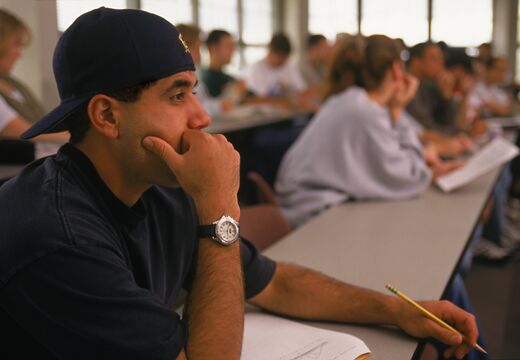
The Liberal’s Art in Higher Education
When I opted to return to college to complete my undergraduate degree, I was unsure whether to pursue a technical degree in engineering, a business degree in finance, or a liberal arts degree in political science. I settled on the arts degree, deciding that in terms of personal development, I would benefit more from a broad education in the humanities—a liberal arts education, a study of classic disciplines.
What I did not expect was the degree to which university campuses, including large prominent schools such as mine, were immersed in the liberal mindset.
Initially I, like so many of my younger fellow freshmen, was not aware of the liberal culture that permeated life at a university. I reflect on the academic accomplishment with some satisfaction, now that I have only a few classes remaining to complete my degree. However, I look back with dissatisfaction at the liberal culture students are coerced to accept as a part of their education. Young minds enjoy freedom to explore new ideas—as long they don’t wander beyond the established intellectual boundaries of the leftist intelligentsia.
There are, of course, facts and figures to support the claim that liberal thought is prevalent on college campuses, such as 72 percent of professors at 183 American universities identifying themselves as liberal. But personal accounts often illustrate a point better than statistics. Although I had many colorful experiences involving leftist thinking on campus, three incidents were particularly disturbing.
The first experience involved a philosophical course on morality and law, in which we were learning about racist legislation from the Brown v. Board of Education era. The discussion was interesting and informative. Then the direction shifted and the professor began lecturing about racist practices on university campuses. To our surprise, we were informed that our campus, one of the most racially diverse in the United States, is a caldron of racism. The assertion had us wondering how this could be true. “It is simple,” the professor explained, “the absence of widespread interracial dating on campus signals to us that racism is a major problem here.” The professor then proceeded to tell us that if we do not desire to date members of another race, then we are also racist.
On another occasion, an anthropology professor, who was supposed to be teaching about “prehistoric developments of culture,” tested students on President George W. Bush’s decision to attack Iraq. To be credited with the correct responses on three exam questions, however, one had to agree with the professor that President Bush was unequivocally wrong. It is difficult for me—and most people, I suspect—to understand the relationship between the science of anthropology and anti-Bush political views.
The last academic experience I wish to relate involves a political theory class. In a section we were studying on sexuality in politics, we explored sex and sexual classification in the context of U.S. democracy. Three out of the ten assigned readings could be considered morally and politically neutral, but the remaining readings were far-left publications, and the liberal agenda was obvious. Within these liberal writings, we read that there are actually three more sexes besides the traditional male and female ones, that distinctions between men and women are nearly unnecessary, and that marriage should be abolished in favor of social agreements between domestic partners regardless of gender. What was the primary source for the material we covered, we were directed to support in essay form, and we were later tested on? It was the National Gay and Lesbian Task Force, a neutral source according to my professor, but a dubious source from this student’s perspective.
The problem with my university, a problem that by no means is limited to my campus, is even greater than the sum of professors of the liberal persuasion. The heart of the matter is, modern American universities create an environment where a liberal view is the only acceptable one for moral, religious, social and political issues. Free exchange of ideas therefore occurs only within the confines of liberal thought. Rather than students learning how to think, they are taught what to think. The liberal mindset dominates every aspect of academic life from physics to politics, from English to economics, and from biology to business.
Liberalism is an all-encompassing ideology that equates what is morally right and just with what is individually satisfying and convenient. Modern liberalism enables students to justify immoral and socially deviant behavior because it dispenses with common decency and replaces traditional values with moral relativism. Students leave their alma mater, their “life-giving mother,” doing what is right in their own eyes, an outlook unreservedly condemned in the Bible (e.g. Judges 21:25).
Alas, despite the observable and foreseeable consequences of a breakdown in morals, leftist ideologues in academia have succeeded in transforming the American system of higher learning into a bastion of modern liberalism. This is the liberal’s art.
